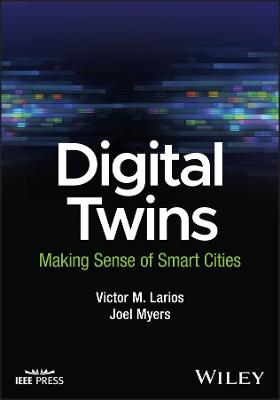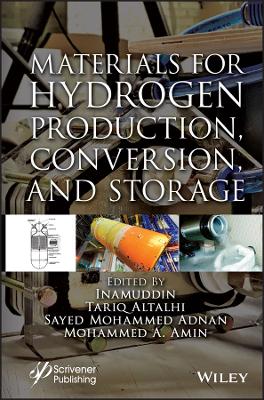Dependable Computing
 -15%
portes grátis
-15%
portes grátis
Dependable Computing
Design and Assessment
Iyer, Ravishankar K.; Kalbarczyk, Zbigniew T.; Nakka, Nithin M.
John Wiley & Sons Inc
05/2024
848
Dura
Inglês
9781118709443
15 a 20 dias
666
Descrição não disponível.
About the Authors xxiii
Preface xxv
Acknowledgments xxvii
About the Companion Website xxix
1 Dependability Concepts and Taxonomy 1
1.1 Introduction 1
1.2 Placing Classical Dependability Techniques in Perspective 2
1.3 Taxonomy of Dependable Computing 4
1.3.1 Faults, Errors, and Failures 5
1.4 Fault Classes 6
1.5 The Fault Cycle and Dependability Measures 6
1.6 Fault and Error Classification 7
1.7 Mean Time Between Failures 11
1.8 User- perceived System Dependability 13
1.9 Technology Trends and Failure Behavior 14
1.10 Issues at the Hardware Level 15
1.11 Issues at the Platform Level 17
1.12 What is Unique About this Book? 18
1.13 Overview of the Book 19
References 20
2 Classical Dependability Techniques and Modern Computing Systems: Where and How Do They Meet? 25
2.1 Illustrative Case Studies of Design for Dependability 25
2.2 Cloud Computing: A Rapidly Expanding Computing Paradigm 31
2.3 New Application Domains 37
2.4 Insights 52
References 52
3 Hardware Error Detection and Recovery Through Hardware- Implemented Techniques 57
3.1 Introduction 57
3.2 Redundancy Techniques 58
3.3 Watchdog Timers 67
3.4 Information Redundancy 69
3.5 Capability and Consistency Checking 93
3.6 Insights 93
References 96
4 Processor Level Error Detection and Recovery 101
4.1 Introduction 101
4.2 Logic- level Techniques 104
4.3 Error Protection in the Processors 115
4.4 Academic Research on Hardware- level Error Protection 122
4.5 Insights 134
References 137
5 Hardware Error Detection Through Software- Implemented Techniques 141
5.1 Introduction 141
5.2 Duplication- based Software Detection Techniques 142
5.3 Control- Flow Checking 146
5.4 Heartbeats 166
5.5 Assertions 173
5.6 Insights 174
References 175
6 Software Error Detection and Recovery Through Software Analysis 179
6.1 Introduction 179
6.2 Diverse Programming 183
6.3 Static Analysis Techniques 194
6.4 Error Detection Based on Dynamic Program Analysis 217
6.5 Processor- Level Selective Replication 233
6.6 Runtime Checking for Residual Software Bugs 239
6.7 Data Audit 242
6.8 Application of Data Audit Techniques 246
6.9 Insights 252
References 253
7 Measurement- based Analysis of System Software: Operating System Failure Behavior 261
7.1 Introduction 261
7.2 MVS (Multiple Virtual Storage) 262
7.3 Experimental Analysis of OS Dependability 273
7.4 Behavior of the Linux Operating System in the Presence of Errors 275
7.5 Evaluation of Process Pairs in Tandem GUARDIAN 295
7.6 Benchmarking Multiple Operating Systems: A Case Study Using Linux on Pentium, Solaris on SPARC, and AIX on POWER 308
7.7 Dependability Overview of the Cisco Nexus Operating System 326
7.8 Evaluating Operating Systems: Related Studies 330
7.9 Insights 331
References 332
8 Reliable Networked and Distributed Systems 337
8.1 Introduction 337
8.2 System Model 339
8.3 Failure Models 340
8.4 Agreement Protocols 342
8.5 Reliable Broadcast 346
8.6 Reliable Group Communication 351
8.7 Replication 358
8.8 Replication of Multithreaded Applications 370
8.9 Atomic Commit 396
8.10 Opportunities and Challenges in Resource- Disaggregated Cloud Data Centers 400
References 405
9 Checkpointing and Rollback Error Recovery 413
9.1 Introduction 413
9.2 Hardware- Implemented Cache- Based Schemes Checkpointing 415
9.3 Memory- Based Schemes 421
9.4 Operating- System- Level Checkpointing 424
9.5 Compiler- Assisted Checkpointing 432
9.6 Error Detection and Recovery in Distributed Systems 438
9.7 Checkpointing Latency Modeling 451
9.8 Checkpointing in Main Memory Database Systems (MMDB) 455
9.9 Checkpointing in Distributed Database Systems 463
9.10 Multithreaded Checkpointing 468
References 470
10 Checkpointing Large- Scale Systems 475
10.1 Introduction 475
10.2 Checkpointing Techniques 476
10.3 Checkpointing in Selected Existing Systems 484
10.4 Modeling- Coordinated Checkpointing for Large- Scale Supercomputers 492
10.5 Checkpointing in Large- Scale Systems: A Simulation Study 502
10.6 Cooperative Checkpointing 506
References 508
11 Internals of Fault Injection Techniques 511
11.1 Introduction 511
11.2 Historical View of Software Fault Injection 513
11.3 Fault Model Attributes 517
11.4 Compile- Time Fault Injection 517
11.5 Runtime Fault Injection 521
11.6 Simulation- Based Fault Injection 529
11.7 Dependability Benchmark Attributes 530
11.8 Architecture of a Fault Injection Environment: NFTAPE Fault/Error Injection Framework Configured to Evaluate Linux OS 531
11.9 ML- Based Fault Injection: Evaluating Modern Autonomous Vehicles 547
11.10 Insights and Concluding Remarks 574
References 574
12 Measurement- Based Analysis of Large- Scale Clusters: Methodology 585
12.1 Introduction 585
12.2 Related Research 587
12.3 Steps in Field Failure Data Analysis 594
12.4 Failure Event Monitoring and Logging 597
12.5 Data Processing 608
12.6 Data Analysis 622
12.7 Estimation of Empirical Distributions 634
12.8 Dependency Analysis 641
References 651
13 Measurement- Based Analysis of Large Systems: Case Studies 667
13.1 Introduction 667
13.2 Case Study I: Failure Characterization of a Production Software- as- a- Service Cloud Platform 667
13.3 Case Study II: Analysis of Blue Waters System Failures 686
13.4 Case Study III: Autonomous Vehicles: Analysis of Human- Generated Data 710
References 737
14 The Future: Dependable and Trustworthy AI Systems 745
14.1 Introduction 745
14.2 Building Trustworthy AI Systems 748
14.3 Offline Identification of Deficiencies 753
14.4 Online Detection and Mitigation 769
14.5 Trust Model Formulation 772
14.6 Modeling the Trustworthiness of Critical Applications 775
14.7 Conclusion: How Can We Make AI Systems Trustworthy? 786
References 788
Index 797
Preface xxv
Acknowledgments xxvii
About the Companion Website xxix
1 Dependability Concepts and Taxonomy 1
1.1 Introduction 1
1.2 Placing Classical Dependability Techniques in Perspective 2
1.3 Taxonomy of Dependable Computing 4
1.3.1 Faults, Errors, and Failures 5
1.4 Fault Classes 6
1.5 The Fault Cycle and Dependability Measures 6
1.6 Fault and Error Classification 7
1.7 Mean Time Between Failures 11
1.8 User- perceived System Dependability 13
1.9 Technology Trends and Failure Behavior 14
1.10 Issues at the Hardware Level 15
1.11 Issues at the Platform Level 17
1.12 What is Unique About this Book? 18
1.13 Overview of the Book 19
References 20
2 Classical Dependability Techniques and Modern Computing Systems: Where and How Do They Meet? 25
2.1 Illustrative Case Studies of Design for Dependability 25
2.2 Cloud Computing: A Rapidly Expanding Computing Paradigm 31
2.3 New Application Domains 37
2.4 Insights 52
References 52
3 Hardware Error Detection and Recovery Through Hardware- Implemented Techniques 57
3.1 Introduction 57
3.2 Redundancy Techniques 58
3.3 Watchdog Timers 67
3.4 Information Redundancy 69
3.5 Capability and Consistency Checking 93
3.6 Insights 93
References 96
4 Processor Level Error Detection and Recovery 101
4.1 Introduction 101
4.2 Logic- level Techniques 104
4.3 Error Protection in the Processors 115
4.4 Academic Research on Hardware- level Error Protection 122
4.5 Insights 134
References 137
5 Hardware Error Detection Through Software- Implemented Techniques 141
5.1 Introduction 141
5.2 Duplication- based Software Detection Techniques 142
5.3 Control- Flow Checking 146
5.4 Heartbeats 166
5.5 Assertions 173
5.6 Insights 174
References 175
6 Software Error Detection and Recovery Through Software Analysis 179
6.1 Introduction 179
6.2 Diverse Programming 183
6.3 Static Analysis Techniques 194
6.4 Error Detection Based on Dynamic Program Analysis 217
6.5 Processor- Level Selective Replication 233
6.6 Runtime Checking for Residual Software Bugs 239
6.7 Data Audit 242
6.8 Application of Data Audit Techniques 246
6.9 Insights 252
References 253
7 Measurement- based Analysis of System Software: Operating System Failure Behavior 261
7.1 Introduction 261
7.2 MVS (Multiple Virtual Storage) 262
7.3 Experimental Analysis of OS Dependability 273
7.4 Behavior of the Linux Operating System in the Presence of Errors 275
7.5 Evaluation of Process Pairs in Tandem GUARDIAN 295
7.6 Benchmarking Multiple Operating Systems: A Case Study Using Linux on Pentium, Solaris on SPARC, and AIX on POWER 308
7.7 Dependability Overview of the Cisco Nexus Operating System 326
7.8 Evaluating Operating Systems: Related Studies 330
7.9 Insights 331
References 332
8 Reliable Networked and Distributed Systems 337
8.1 Introduction 337
8.2 System Model 339
8.3 Failure Models 340
8.4 Agreement Protocols 342
8.5 Reliable Broadcast 346
8.6 Reliable Group Communication 351
8.7 Replication 358
8.8 Replication of Multithreaded Applications 370
8.9 Atomic Commit 396
8.10 Opportunities and Challenges in Resource- Disaggregated Cloud Data Centers 400
References 405
9 Checkpointing and Rollback Error Recovery 413
9.1 Introduction 413
9.2 Hardware- Implemented Cache- Based Schemes Checkpointing 415
9.3 Memory- Based Schemes 421
9.4 Operating- System- Level Checkpointing 424
9.5 Compiler- Assisted Checkpointing 432
9.6 Error Detection and Recovery in Distributed Systems 438
9.7 Checkpointing Latency Modeling 451
9.8 Checkpointing in Main Memory Database Systems (MMDB) 455
9.9 Checkpointing in Distributed Database Systems 463
9.10 Multithreaded Checkpointing 468
References 470
10 Checkpointing Large- Scale Systems 475
10.1 Introduction 475
10.2 Checkpointing Techniques 476
10.3 Checkpointing in Selected Existing Systems 484
10.4 Modeling- Coordinated Checkpointing for Large- Scale Supercomputers 492
10.5 Checkpointing in Large- Scale Systems: A Simulation Study 502
10.6 Cooperative Checkpointing 506
References 508
11 Internals of Fault Injection Techniques 511
11.1 Introduction 511
11.2 Historical View of Software Fault Injection 513
11.3 Fault Model Attributes 517
11.4 Compile- Time Fault Injection 517
11.5 Runtime Fault Injection 521
11.6 Simulation- Based Fault Injection 529
11.7 Dependability Benchmark Attributes 530
11.8 Architecture of a Fault Injection Environment: NFTAPE Fault/Error Injection Framework Configured to Evaluate Linux OS 531
11.9 ML- Based Fault Injection: Evaluating Modern Autonomous Vehicles 547
11.10 Insights and Concluding Remarks 574
References 574
12 Measurement- Based Analysis of Large- Scale Clusters: Methodology 585
12.1 Introduction 585
12.2 Related Research 587
12.3 Steps in Field Failure Data Analysis 594
12.4 Failure Event Monitoring and Logging 597
12.5 Data Processing 608
12.6 Data Analysis 622
12.7 Estimation of Empirical Distributions 634
12.8 Dependency Analysis 641
References 651
13 Measurement- Based Analysis of Large Systems: Case Studies 667
13.1 Introduction 667
13.2 Case Study I: Failure Characterization of a Production Software- as- a- Service Cloud Platform 667
13.3 Case Study II: Analysis of Blue Waters System Failures 686
13.4 Case Study III: Autonomous Vehicles: Analysis of Human- Generated Data 710
References 737
14 The Future: Dependable and Trustworthy AI Systems 745
14.1 Introduction 745
14.2 Building Trustworthy AI Systems 748
14.3 Offline Identification of Deficiencies 753
14.4 Online Detection and Mitigation 769
14.5 Trust Model Formulation 772
14.6 Modeling the Trustworthiness of Critical Applications 775
14.7 Conclusion: How Can We Make AI Systems Trustworthy? 786
References 788
Index 797
Este título pertence ao(s) assunto(s) indicados(s). Para ver outros títulos clique no assunto desejado.
Dependable Computing Design and Assessment; Ravishankar K. Iyer; Zbigniew T. Kalbarczyk; Nithin M. Nakka; cloud computing; security attacks; new smart grids
About the Authors xxiii
Preface xxv
Acknowledgments xxvii
About the Companion Website xxix
1 Dependability Concepts and Taxonomy 1
1.1 Introduction 1
1.2 Placing Classical Dependability Techniques in Perspective 2
1.3 Taxonomy of Dependable Computing 4
1.3.1 Faults, Errors, and Failures 5
1.4 Fault Classes 6
1.5 The Fault Cycle and Dependability Measures 6
1.6 Fault and Error Classification 7
1.7 Mean Time Between Failures 11
1.8 User- perceived System Dependability 13
1.9 Technology Trends and Failure Behavior 14
1.10 Issues at the Hardware Level 15
1.11 Issues at the Platform Level 17
1.12 What is Unique About this Book? 18
1.13 Overview of the Book 19
References 20
2 Classical Dependability Techniques and Modern Computing Systems: Where and How Do They Meet? 25
2.1 Illustrative Case Studies of Design for Dependability 25
2.2 Cloud Computing: A Rapidly Expanding Computing Paradigm 31
2.3 New Application Domains 37
2.4 Insights 52
References 52
3 Hardware Error Detection and Recovery Through Hardware- Implemented Techniques 57
3.1 Introduction 57
3.2 Redundancy Techniques 58
3.3 Watchdog Timers 67
3.4 Information Redundancy 69
3.5 Capability and Consistency Checking 93
3.6 Insights 93
References 96
4 Processor Level Error Detection and Recovery 101
4.1 Introduction 101
4.2 Logic- level Techniques 104
4.3 Error Protection in the Processors 115
4.4 Academic Research on Hardware- level Error Protection 122
4.5 Insights 134
References 137
5 Hardware Error Detection Through Software- Implemented Techniques 141
5.1 Introduction 141
5.2 Duplication- based Software Detection Techniques 142
5.3 Control- Flow Checking 146
5.4 Heartbeats 166
5.5 Assertions 173
5.6 Insights 174
References 175
6 Software Error Detection and Recovery Through Software Analysis 179
6.1 Introduction 179
6.2 Diverse Programming 183
6.3 Static Analysis Techniques 194
6.4 Error Detection Based on Dynamic Program Analysis 217
6.5 Processor- Level Selective Replication 233
6.6 Runtime Checking for Residual Software Bugs 239
6.7 Data Audit 242
6.8 Application of Data Audit Techniques 246
6.9 Insights 252
References 253
7 Measurement- based Analysis of System Software: Operating System Failure Behavior 261
7.1 Introduction 261
7.2 MVS (Multiple Virtual Storage) 262
7.3 Experimental Analysis of OS Dependability 273
7.4 Behavior of the Linux Operating System in the Presence of Errors 275
7.5 Evaluation of Process Pairs in Tandem GUARDIAN 295
7.6 Benchmarking Multiple Operating Systems: A Case Study Using Linux on Pentium, Solaris on SPARC, and AIX on POWER 308
7.7 Dependability Overview of the Cisco Nexus Operating System 326
7.8 Evaluating Operating Systems: Related Studies 330
7.9 Insights 331
References 332
8 Reliable Networked and Distributed Systems 337
8.1 Introduction 337
8.2 System Model 339
8.3 Failure Models 340
8.4 Agreement Protocols 342
8.5 Reliable Broadcast 346
8.6 Reliable Group Communication 351
8.7 Replication 358
8.8 Replication of Multithreaded Applications 370
8.9 Atomic Commit 396
8.10 Opportunities and Challenges in Resource- Disaggregated Cloud Data Centers 400
References 405
9 Checkpointing and Rollback Error Recovery 413
9.1 Introduction 413
9.2 Hardware- Implemented Cache- Based Schemes Checkpointing 415
9.3 Memory- Based Schemes 421
9.4 Operating- System- Level Checkpointing 424
9.5 Compiler- Assisted Checkpointing 432
9.6 Error Detection and Recovery in Distributed Systems 438
9.7 Checkpointing Latency Modeling 451
9.8 Checkpointing in Main Memory Database Systems (MMDB) 455
9.9 Checkpointing in Distributed Database Systems 463
9.10 Multithreaded Checkpointing 468
References 470
10 Checkpointing Large- Scale Systems 475
10.1 Introduction 475
10.2 Checkpointing Techniques 476
10.3 Checkpointing in Selected Existing Systems 484
10.4 Modeling- Coordinated Checkpointing for Large- Scale Supercomputers 492
10.5 Checkpointing in Large- Scale Systems: A Simulation Study 502
10.6 Cooperative Checkpointing 506
References 508
11 Internals of Fault Injection Techniques 511
11.1 Introduction 511
11.2 Historical View of Software Fault Injection 513
11.3 Fault Model Attributes 517
11.4 Compile- Time Fault Injection 517
11.5 Runtime Fault Injection 521
11.6 Simulation- Based Fault Injection 529
11.7 Dependability Benchmark Attributes 530
11.8 Architecture of a Fault Injection Environment: NFTAPE Fault/Error Injection Framework Configured to Evaluate Linux OS 531
11.9 ML- Based Fault Injection: Evaluating Modern Autonomous Vehicles 547
11.10 Insights and Concluding Remarks 574
References 574
12 Measurement- Based Analysis of Large- Scale Clusters: Methodology 585
12.1 Introduction 585
12.2 Related Research 587
12.3 Steps in Field Failure Data Analysis 594
12.4 Failure Event Monitoring and Logging 597
12.5 Data Processing 608
12.6 Data Analysis 622
12.7 Estimation of Empirical Distributions 634
12.8 Dependency Analysis 641
References 651
13 Measurement- Based Analysis of Large Systems: Case Studies 667
13.1 Introduction 667
13.2 Case Study I: Failure Characterization of a Production Software- as- a- Service Cloud Platform 667
13.3 Case Study II: Analysis of Blue Waters System Failures 686
13.4 Case Study III: Autonomous Vehicles: Analysis of Human- Generated Data 710
References 737
14 The Future: Dependable and Trustworthy AI Systems 745
14.1 Introduction 745
14.2 Building Trustworthy AI Systems 748
14.3 Offline Identification of Deficiencies 753
14.4 Online Detection and Mitigation 769
14.5 Trust Model Formulation 772
14.6 Modeling the Trustworthiness of Critical Applications 775
14.7 Conclusion: How Can We Make AI Systems Trustworthy? 786
References 788
Index 797
Preface xxv
Acknowledgments xxvii
About the Companion Website xxix
1 Dependability Concepts and Taxonomy 1
1.1 Introduction 1
1.2 Placing Classical Dependability Techniques in Perspective 2
1.3 Taxonomy of Dependable Computing 4
1.3.1 Faults, Errors, and Failures 5
1.4 Fault Classes 6
1.5 The Fault Cycle and Dependability Measures 6
1.6 Fault and Error Classification 7
1.7 Mean Time Between Failures 11
1.8 User- perceived System Dependability 13
1.9 Technology Trends and Failure Behavior 14
1.10 Issues at the Hardware Level 15
1.11 Issues at the Platform Level 17
1.12 What is Unique About this Book? 18
1.13 Overview of the Book 19
References 20
2 Classical Dependability Techniques and Modern Computing Systems: Where and How Do They Meet? 25
2.1 Illustrative Case Studies of Design for Dependability 25
2.2 Cloud Computing: A Rapidly Expanding Computing Paradigm 31
2.3 New Application Domains 37
2.4 Insights 52
References 52
3 Hardware Error Detection and Recovery Through Hardware- Implemented Techniques 57
3.1 Introduction 57
3.2 Redundancy Techniques 58
3.3 Watchdog Timers 67
3.4 Information Redundancy 69
3.5 Capability and Consistency Checking 93
3.6 Insights 93
References 96
4 Processor Level Error Detection and Recovery 101
4.1 Introduction 101
4.2 Logic- level Techniques 104
4.3 Error Protection in the Processors 115
4.4 Academic Research on Hardware- level Error Protection 122
4.5 Insights 134
References 137
5 Hardware Error Detection Through Software- Implemented Techniques 141
5.1 Introduction 141
5.2 Duplication- based Software Detection Techniques 142
5.3 Control- Flow Checking 146
5.4 Heartbeats 166
5.5 Assertions 173
5.6 Insights 174
References 175
6 Software Error Detection and Recovery Through Software Analysis 179
6.1 Introduction 179
6.2 Diverse Programming 183
6.3 Static Analysis Techniques 194
6.4 Error Detection Based on Dynamic Program Analysis 217
6.5 Processor- Level Selective Replication 233
6.6 Runtime Checking for Residual Software Bugs 239
6.7 Data Audit 242
6.8 Application of Data Audit Techniques 246
6.9 Insights 252
References 253
7 Measurement- based Analysis of System Software: Operating System Failure Behavior 261
7.1 Introduction 261
7.2 MVS (Multiple Virtual Storage) 262
7.3 Experimental Analysis of OS Dependability 273
7.4 Behavior of the Linux Operating System in the Presence of Errors 275
7.5 Evaluation of Process Pairs in Tandem GUARDIAN 295
7.6 Benchmarking Multiple Operating Systems: A Case Study Using Linux on Pentium, Solaris on SPARC, and AIX on POWER 308
7.7 Dependability Overview of the Cisco Nexus Operating System 326
7.8 Evaluating Operating Systems: Related Studies 330
7.9 Insights 331
References 332
8 Reliable Networked and Distributed Systems 337
8.1 Introduction 337
8.2 System Model 339
8.3 Failure Models 340
8.4 Agreement Protocols 342
8.5 Reliable Broadcast 346
8.6 Reliable Group Communication 351
8.7 Replication 358
8.8 Replication of Multithreaded Applications 370
8.9 Atomic Commit 396
8.10 Opportunities and Challenges in Resource- Disaggregated Cloud Data Centers 400
References 405
9 Checkpointing and Rollback Error Recovery 413
9.1 Introduction 413
9.2 Hardware- Implemented Cache- Based Schemes Checkpointing 415
9.3 Memory- Based Schemes 421
9.4 Operating- System- Level Checkpointing 424
9.5 Compiler- Assisted Checkpointing 432
9.6 Error Detection and Recovery in Distributed Systems 438
9.7 Checkpointing Latency Modeling 451
9.8 Checkpointing in Main Memory Database Systems (MMDB) 455
9.9 Checkpointing in Distributed Database Systems 463
9.10 Multithreaded Checkpointing 468
References 470
10 Checkpointing Large- Scale Systems 475
10.1 Introduction 475
10.2 Checkpointing Techniques 476
10.3 Checkpointing in Selected Existing Systems 484
10.4 Modeling- Coordinated Checkpointing for Large- Scale Supercomputers 492
10.5 Checkpointing in Large- Scale Systems: A Simulation Study 502
10.6 Cooperative Checkpointing 506
References 508
11 Internals of Fault Injection Techniques 511
11.1 Introduction 511
11.2 Historical View of Software Fault Injection 513
11.3 Fault Model Attributes 517
11.4 Compile- Time Fault Injection 517
11.5 Runtime Fault Injection 521
11.6 Simulation- Based Fault Injection 529
11.7 Dependability Benchmark Attributes 530
11.8 Architecture of a Fault Injection Environment: NFTAPE Fault/Error Injection Framework Configured to Evaluate Linux OS 531
11.9 ML- Based Fault Injection: Evaluating Modern Autonomous Vehicles 547
11.10 Insights and Concluding Remarks 574
References 574
12 Measurement- Based Analysis of Large- Scale Clusters: Methodology 585
12.1 Introduction 585
12.2 Related Research 587
12.3 Steps in Field Failure Data Analysis 594
12.4 Failure Event Monitoring and Logging 597
12.5 Data Processing 608
12.6 Data Analysis 622
12.7 Estimation of Empirical Distributions 634
12.8 Dependency Analysis 641
References 651
13 Measurement- Based Analysis of Large Systems: Case Studies 667
13.1 Introduction 667
13.2 Case Study I: Failure Characterization of a Production Software- as- a- Service Cloud Platform 667
13.3 Case Study II: Analysis of Blue Waters System Failures 686
13.4 Case Study III: Autonomous Vehicles: Analysis of Human- Generated Data 710
References 737
14 The Future: Dependable and Trustworthy AI Systems 745
14.1 Introduction 745
14.2 Building Trustworthy AI Systems 748
14.3 Offline Identification of Deficiencies 753
14.4 Online Detection and Mitigation 769
14.5 Trust Model Formulation 772
14.6 Modeling the Trustworthiness of Critical Applications 775
14.7 Conclusion: How Can We Make AI Systems Trustworthy? 786
References 788
Index 797
Este título pertence ao(s) assunto(s) indicados(s). Para ver outros títulos clique no assunto desejado.







